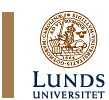

|
Panel No. 44Panel Title: Religious Reform Movements in South Asia from the Nineteenth Century to the PresentConvenor: Dr Gwilym Beckerlegge, Dept of Religious Studies, Open University, UK Tuesday 6 July, 13–18 Panel Abstract: The panel aims to bring together specialists from a range of disciplines within the humanities and social sciences in order to explore the development since the nineteenth century of South Asian religious reform movements. Although the majority of papers presented to recent meetings of the panel have covered movements within Hinduism and Islam, submissions relating to other South Asian religions would also be welcomed. In addition to discussing problems in the representation of such movements and their study, papers presented at recent meetings of the panel have examined religious reform movements in relationship to (among other things) historical personalities and texts, institutions and organisation, nationalism and the relations between religions, gender, philanthropy and education, and membership and proselytism.
Papers accepted for presentation in the panel:Paper Giver 1: Ferdinando Sardella, Dept. of History of Religion, University of Göteborg, Sweden Paper 1 Title: Reforming sacred geography: Bhaktivinode Thakura and the two birthplaces of Krishna Chaitanya Paper Abstract: The paper will discuss how Bhaktivinode Thakura, a high-ranking judge in the British administration of the late 19th century, and the father and spiritual mentor of Bhaktisiddhanta Sarasvati, a religious reformer, effectively constructed a new sacred geography for Navadipa, the birthplace of the Bengali saint Krishna Chaitanya (1486-1534). This allowed him to disconnect the reform movement he had founded from the seminal caste brahmanas of the area, and create a new casteless religious structure parallel to the medieval one of the local brahmanas. By this reform, Bhaktivinode Thakura challenged the established brahmanical control over pilgrimage sites, which was, and still is, a major factor for religious influence in the area. Paper Giver 2: Gwilym Beckerlegge, The Open University, UK Paper 2 Title: The iconic presence of Swami Vivekananda Paper Abstract: Photography came
to Calcutta not long before Ramakrishna and Vivekananda achieved
prominence, making it possible for their legacy to be perpetuated
through what Lawrence Babb has termed a ‘photo-iconographic’
tradition. The small collection of photographs of the major personalities
associated with the birth of the Math and Mission has shaped their
depiction both within the movement and more generally in commercially
produced materials, including devotional posters, postcards, and
three-dimensional images. Paper Giver 3: Diego Abenante, University of Trieste, Italy Paper 3 Title: Nineteenth century Sufi reform and religious boundaries in southwestern Panjab Paper
Abstract: The aim of the paper is to analyse the development
of some Sufi traditions, often identified as “revivalist shrines”,
mainly belonging to the Nizami silsila of the Chishtiya order. The
region chosen as the focus of the paper is the southwestern Panjab,
approximately corresponding to the British districts of Multan,
Muzaffargarh, Dera Ghazi Khan, and to the territory of Bahawalpur
State. The Chishti revival of the late eighteenth and nineteenth
century is generally seen as a movement towards purification of
Islam and the defence of Muslim political authority in a period
dominated by a perception of decline of Muslim culture. The aim
of the movement is supposed to be a reaction to popular Sufi practices,
and the elaboration of a dimension that combined spiritual mediation
and teaching with the maintenance of the centrality of religious
law. Paper Giver 4: Dr. M.T. Kamble, Karnatak University, India Paper 4 Title: Raja Ram Mohan Roy and Dayananda Saraswathi – Shaping of the Renaissance Movement in Karnataka Paper Abstract: The term ‘renaissance’
was originally used in European historiography to refer to the revival
of Greco-Roman tradition for the reconstruction of Europe in every
field of life. The term ’renaissance’ is borrowed from
European historiography and used in modern Indian history of the
19th century. Paper Giver 5: Hiltrud Rüstau, Humboldt University Berlin, School of Asian and African Studies, Seminar für Geschichte und Gesellschaft Südasiens, Germany Paper 5 Title: „Kali
the Mother“: Hinduism in the Eyes of Sister Nivedita Paper Giver 6: Dietrich Reetz, Zentrum Moderner Orient, Berlin, Germany Paper 6 Title: The Deoband Universe: What makes an educational movement of Islam? Paper Abstract: At a time when the inspiration of Deobandi thought for purist Islamic groups and radical militants across a number of countries in Asia and Africa has made sensational news after September 11, 2001 it is felt that the forms and objectives, the potential and impotency of the Deobandi educational movement have to be ascertained and assessed more factually and realistically. The paper is set to explore how the influence of the dar al-`ulam, the Islamic school of higher learning in Deoband, north India, radiates across the countries of South Asia and much beyond. It seeks to understand what are the ingredients of its religious school of thought; how does it function across cultural and political boundaries; and what institutions it has spawned. On the basis of recent field research at the dar al-`ulam Deoband in March 2004 the paper will venture to describe the formal and informal ways of coordination and norm setting, of cooperation and inspiration. It will look at the various forms of interaction, from the Deobandi madrasa network, to derived Deobandi institutions, to the ever expanding network of Deobandi graduates and to the manifestation of their local and translocal influence in other Islamic groups and organisations. Paper Giver 7: Martin Riexinger, University of Freiburg, Germany Paper 7 Title: The Reaction of South Asian Muslims to the Theory of Evolution Paper Abstract: The first South Asian Muslim who
has promoted the idea that mankind is the product of a process of
biological evolution that started from lifeless matter seems to
have been Sayyid Ahmad Khan. However his ideas are distinct from
Darwinism insofar as he did not accept the common origin of life
until a short time before his death.
SASNET - Swedish South Asian Studies Network/Lund
University
|

